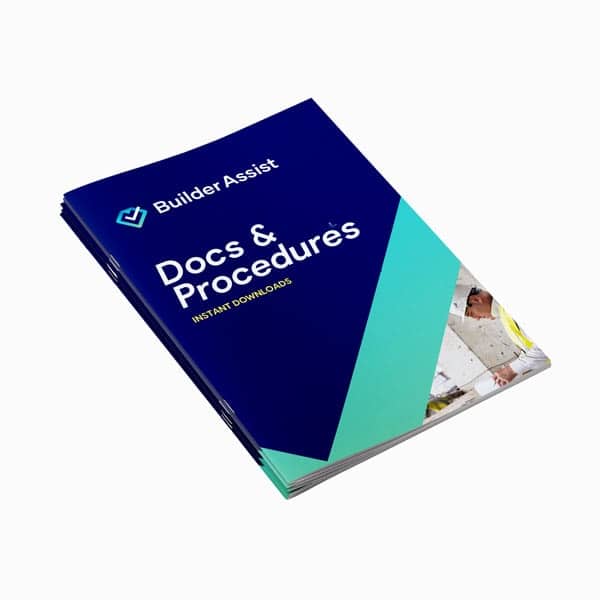
If you’re a tradie, paperwork probably isn’t your favourite part of the job. We get it, you’d rather be on the tools than behind a computer screen. Although, to keep your job site safe, having the right documentation is essential.
One of the most important safety documents you’ll come across is the WHS Management Plan, but how do you know if you actually need one?

Let’s look at what a WHS Management Plan is, who needs one (legally), and why it’s worth your time, even if you’re not legally required to have it.
What is a WHS Management Plan?
You can think of a WHS Management Plan as your site safety game plan. It covers the major things that make your job site safe, legal, and well-organised.
It outlines:
- Who’s responsible for what
- What site rules are in place
- How you’ll manage hazards and risks
- What to do in an emergency
- How you’ll communicate safety info with workers
- How incidents will be reported and handled
- How you’ll check that everything’s working
It’s a go-to safety document that everyone on-site can access and refer to, whether it’s a new apprentice, a subcontractor, or the site supervisor.
Who needs a site safety
If your project is valued at $250,000 or more, a WHS construction management plan template isn’t optional, it’s a legal requirement in Australia. That’s across the board, whether you're working residential, commercial, or industrial.
The person responsible? That’s the principal contractor - usually the head builder or project lead. It’s their job to make sure the WHS Plan is not only created but followed on-site.
This rule comes from the Work Health and Safety Regulations, and it’s enforced across most states and territories in Australia. It doesn’t matter if the site’s a luxury high-rise or a medium-sized reno — if the contract’s over $250K, you’re in WHS plan territory.
What if your job is under $250K?
Good question. Even if you’re not required by law to have a WHS Management Plan, it’s still a really smart decision to have one. Why? Because a WHS Safety Management Plan:
- Makes your site safer
- Keeps everyone on the same page
- Helps prevent injuries and misunderstandings
- Shows clients and contractors that you take safety seriously
- Can help protect you if anything goes wrong
It also makes coordinating different trades easier, especially if you’re juggling sparkies, plumbers, carpenters, and tilers all on the same site. A clear safety plan sets the tone and keeps things organised.
SAFETY MANAGEMENT PLAN – INSTANT DOWNLOAD
What’s included in a WHS Management Plan?
Builder Assist WHS Plans covers the essential elements of site safety, including:
Who’s on-site:
Names and roles of everyone involved - from the project manager to subcontractors.
How risks will be managed:
Identify site-specific hazards and how you’re going to control them.
Site rules:
Any rules that apply to your site - from PPE requirements to restricted access zones.
Emergency procedures:
What to do if there’s a fire, injury, or other incident - including evacuation plans and contacts.
Communication and consultation:
How you’ll keep everyone informed and involved in safety decisions - toolbox talks, signage, pre-starts, etc.
Incident reporting:
How workers can report hazards or injuries, and what your process is for handling them.
Monitoring and review:
How you’ll check that the plan is being followed and updated when needed.
Why Bother? Is it really worth the effort?
While it may feel like overkill, having a WHS Management Plan can actually make your life easier in the long run. It helps you:
- Avoid big fines for non-compliance
- Reduce the chance of injuries on-site
- Build trust with clients and contractors
- Save time by avoiding confusion and miscommunication
- Be audit-ready (if that ever comes knocking)
I something goes wrong, and you don’t have one in place (when you should), it can come back to bite you hard. We're talking legal issues, insurance dramas, and damage to your reputation.
Make it easy with Builder Assist
We know you’re not going to sit around spending hours writing safety documents from scratch. At Builder Assist, we’ve created ready-to-go WHS Management Plan templates designed specifically for tradies. They’re:




So, whether you’re running a $300K reno, building a duplex, or kicking off a large commercial fit-out, we’ve got your safety docs sorted.
Ready to get yours sorted? Download your WHS Management Plan template today from Builder Assist — and get back to what you do best.Top of Form
Not sure what documents and procedures you might need in your trade? No worries! Simply visit Tradespeople Documentation. Here you can access Builder Assist’s instant downloads of documents and procedures specific to your trade.
View the Work Health & Safety Act, Regulations and Codes of Practice in your state or territory, here.
You can also view the Work Health & Safety Regulators in your state or territory, by visiting the SafeWork Australia website.
Check our construction SWMS templates for a safe work method.

Safety Management Plans (WHS)
Specifically designed for each trade starting up a business, these Work Health Safety Management Plans or WHS Management Plans, provide support with the management of Work Health & Safety in the workplace.Also referred to as Occupational Health & Safety (OH&S) the material provided in this section will assist with WHS/OHS management and training requirements for the workplace.



